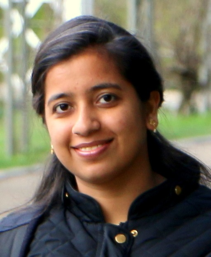
Name Sakshi Khurana
E-mail s.sakshi@utwente.nl
Room Zuidhorst 146
Phone +31 (0)53 - 489 2051
Function PhD Candidate
MORE INFO
Sakshi Khurana obtained her Bachelor degree in Pharmacy (2014) from Delhi Institute of Pharmaceutical Sciences and Research (DIPSAR, Delhi University), India and Masters in Pharmaceutics (2016) from National Institute of Pharmaceutical Education and Research, India.
From December 2016, she was a guest researcher under the supervision of Dr. Janine Post at the department of Developmental BioEngineering (DBE), University of Twente. To understand various aspects of signaling events in cartilage development and degeneration, she studied the changes in the transcriptional activity RUNX2 and SOX9 during the differentiation of mesenchymal stem cells using Fluorescence Recovery after Photobleaching (FRAP). Currently, she is a PhD candidate at the department of DBE to investigate the Currently, she is a PhD candidate at the department of DBE to investigate the network that regulates the chondrocyte cellular outcome.
Osteoarthritis (OA) is a complex disease of cartilage in which the activity of multiple signaling pathways is influenced. The change in the activity of these pathways lead to change in the levels and activity of major chondrocyte phenotype-determining downstream transcription factors such as SOX9 and RUNX2. In current OA research, these pathways are studied in an isolated context. However, the ultimate cellular outcome in health and disease condition is determined by the interaction between these signaling pathways. Hence an integrated approach is needed to study signaling pathways in the context of other biological processes. During her PhD, Sakshi will investigate the various signaling pathways and their cross-talk which regulate the switch between permanent and transient cartilage using computational modeling, FRAP and molecular biology methods. The outcome of the project would be to avoid transition towards hypertrophy in articular cartilage and to control the differentiation towards hypertrophy in endochondral bone tissue engineering.
